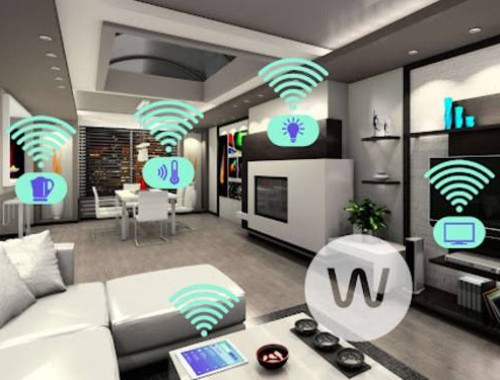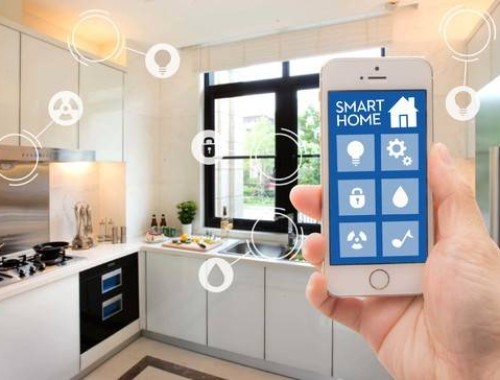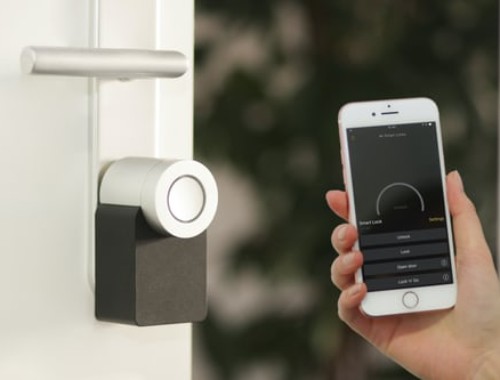China Smart Home Industry Development Report
Source:AVC
As a hot word in the new era, “smart” has attracted the attention of the home appliance industry.
As a hot word in the new era, “smart” has attracted the attention of the home appliance industry. More and more companies are expanding their smart roads, especially in the context of the retail scale of China’s home appliance market touching the ceiling. Home furniture have become the focus of much attention.
Research scope of smart home
To study the development of the smart home industry, we need to clarify the scope of smart home research. First of all, smart home should be an ecosystem. It is a home ecosystem based on the Internet of Things technology based on housing as a platform, consisting of hardware (smart home appliances, smart hardware, security control equipment, furniture, etc.), software systems, and cloud computing platforms. Secondly, in this ecosystem, home appliances can be interconnected to realize remote human-computer interaction and control. Finally, the device has self-learning and self-adaptation capabilities, and can provide users with safer, more comfortable, energy-saving, efficient, and convenient personalized services by collecting and analyzing user behavior data.
The advancement of smart homes in my country still has a long way to go
The United States is the world's first country to enter the smart home market, leading the demand and penetration of home automation, followed by the European market. Compared with western developed countries, our country's smart home advancement still has a long way to go.
Driven by the development of technologies such as artificial intelligence and big data, our country's smart home market is currently in a period of development. First of all, the penetration rate of smart hardware products in the market is relatively high. Products such as smart speakers, robots, and smart TVs are competing for the status of smart home control centers. Among them, smart speaker products are the first to verify their feasibility as a control center. Secondly, although smart home is the mainstream trend in the market, the product itself is low in intelligence and the user experience is not perfect. Most consumers are still on the sidelines of smart home products. Therefore, the market needs further education. Finally, the current smart home market is a mixed bag, each working independently without a unified standard. Each product has become an information island. The smart home platform has been initially built, and the smart home system needs to be improved urgently.
The smart home industry chain is beginning to take shape
After several years of development, the industrial chain of our country's smart home industry has been basically clear: the upstream of the industrial chain is mainly composed of supply chain companies and foundries that provide components/parts, systems, and software; the midstream is mainly a system that provides solutions. It is composed of solution providers and hardware manufacturers that produce smart products; the downstream is composed of various channels to reach consumers, as well as smart home platforms and smart home apps. From the perspective of the importance of interaction with users, smart home products and smart home platforms are the key success factors of the industry chain.
In addition, the boundaries of the industry are gradually blurring, cross-border is both a trend and inevitable. Internet companies, hardware manufacturers, home improvement, home furnishings, designers, real estate developers, and various service providers are all potential participants and creators of the smart home ecosystem.
Smart home appliances: a must-see in the market
Smart home appliances are the most frequent and tightest part of the interaction with users in all types of smart home products. From the perspective of retail market data, the retail sales penetration rate of smart TVs and smart air conditioners is currently the highest, and the retail volume is also the largest. The scale of other smart home appliances is also expanding at a considerable speed. The smart home appliance retail market is ushering in an era of competition, and this also indicates that the golden age of smart home appliances is coming.
Development of key hardware markets
We mainly selected two areas of chip and intelligent voice for data analysis. Affected by many favorable factors such as the macro policy environment, technological progress and upgrading, and the popularization of artificial intelligence applications, China's AI chip market will develop further. It is estimated that by 2022, the global AI chip market will reach 35.2 billion U.S. dollars, and the Chinese market will reach 36.8 billion U.S. dollars.
In general, domestic MCUs are far from foreign companies in terms of market share and technical level. For Chinese companies, 8 MCUs currently occupy the mainstream market, accounting for about 50%. The 16/32-bit MCU accounts for about 20% respectively. The Sino-US trade war has made the concept of domestic chip substitution become more and more popular, and some manufacturers have gradually realized the transfer of mid-to-high-end, ushering in new opportunities. The development of smart homes drives the expansion of domestic MCU demand, and brings a strong impetus to the development of domestic MCUs.
"Entrance" is still evolving
In 2014, smart routers became the entry point for the smart home industry, and then traditional companies naturally chose products that they were good at as the entry point to seize traffic. In 2017, smart speakers were favored by the market due to voice interaction. In 2018, smart speakers increased by 823%. In 2019, interactive portals with screens will become the darling of the market, and smart projections, screen speakers, and smart TVs are expected to have considerable development. Visual interaction is superior to auditory interaction in terms of efficiency, experience, and security.
The importance of the pre-installation market is prominent
Companies actively participate in the pre-installation market, and refined decoration has become an important driving force for the rapid popularization of smart homes. According to data from AVC Cloud Network, in 2020, the scale of smart parts in our country's fine decoration market will grow rapidly. Among them, smart security and smart door lock parts are the largest, and smart toilets, smart switches, smart home appliances, smart showers and other products will also increase very quickly. The scale of smart home appliances in the retail market will also usher in further growth.
Pain points in the smart home market
At present, our country's smart home still faces many problems in the process of promotion and popularization. In the future, the key elements of industry success will focus on the improvement of technology, standards, talents, costs, and experience: (1) Technology is a key factor affecting the development of smart home software and hardware and user experience; (2) Only a unified standards can promote the rapid development of the industry, purify the industry, and survive the fittest; (3) Sufficient high-tech talents are the foundation to ensure the development of the smart home industry; (4) Reduce costs, lower user purchase thresholds, enhance user acceptance, and accelerate popularization; (5) Strengthen experience effects and increase experience channels.
Future development trend
The development of various cutting-edge technologies will facilitate the further realization of smart home scenarios. The further expansion of 5G application scope will break the threshold of intelligent life. With the maturity of artificial intelligence, basic technologies such as voice recognition and image recognition will become the standard configuration of smart homes. By mining users’ device usage behaviors, optimizing product strategies and market strategies, establishing user portraits to increase secondary sales, and through activity status analysis and failure rate analysis accelerate the smart home from intelligent to data.
When the single product of smart home is no longer an island of information, but forms a corresponding smart home scene system, collect user data from daily life scenes, and provide accurate and personalized services, smart home can truly become a complete system. On the basis of smart home integration, using smart home products as tentacles, actively acquire consumer’s living habits data, conduct data mining and analysis, and connect the analysis results with third-party service providers to provide consumers with personalized services. As a result, the "ecosphere" profit model of smart homes is realized.
The source has been identified in this article. All copyrights belong to the original anthor. In case of infringement, please contact us.
-

Midea released the first smart home operating system based on HarmonyOS
-

The second quarter analysis of the European smart home market is released, Amazon tops the list
-

Huisen Furniture joins hands with Xiaomi, entering the Smart Field of the Whole House
-

The demand for home security is as high as 92%, with huge growth potential

 沪公网安备31010402003309号
沪公网安备31010402003309号



